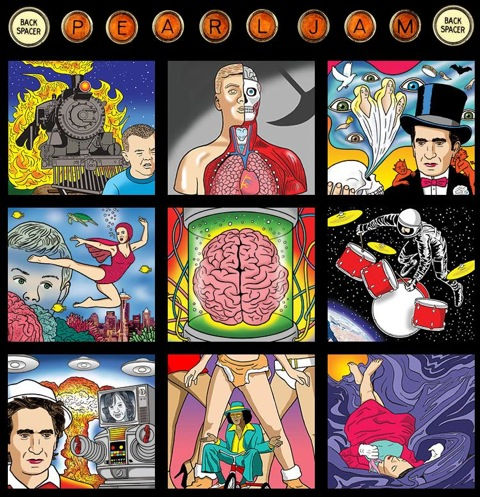RATING: 3 / 5 stars
By Chris Moore:
To be honest, Marcy Playground is a band I had forgotten about, leaving them behind in a hazy collection of other nineties modern rock one hit wonders.
Out of sheer curiosity, I felt the urge to hear this most recent album from the “Sex and Candy” singer — it was originally slated as a John Wozniak solo project — that I came across on the Newbury Comics new release rack. (It certainly didn’t hurt that the disc came with a free download of their previous album, the aptly titled third release from the band: MP3.)
I didn’t expect much, considering that over a decade had passed since I had heard a song from the band. I always liked “Sex and Candy,” but even in 1997 I knew it was a fairly straightforward track made notable only by its provocative lyrics and Wozniak’s low, unique vocal tones.
What I got was a solid album comprised predominantly of an artist’s exploration of the roots of his music. Throughout Leaving Wonderland…in a fit of rage, Wozniak’s songwriting is simple and the band’s arrangements are as standard as they come.
When I use the term “solid,” I mean that Marcy Playground’s fourth release is comprised of generally enjoyable songs placed in an effective order to not only keep the listener’s attention, but also to contribute to a largely common set of themes.
And, yes, beyond all these qualifications that I am making, there exists the realization that a “solid” album may be listened to and even appreciated, but it is nothing special.
As with their late nineties single, one of the greatest strengths of the album is Wozniak’s signature vocals. Throughout the album, he weaves tales of sorrow, loss, and reconsideration. Whatever “Wonderland” represents for Marcy Playground’s John Wozniak — a relationship or fame to name just a couple possibilities — the exit from said Wonderland is indeed a violent one, soaked in booze and drugs and, at times, literally marked by flames.
“Blackbird,” the opening track and the first US single, sets the tone for what is a heavily acoustic record, a notable departure from their previous release. “Irene” and “Memphis” are so acoustic and rootsy that they sound as though they were snatched from a decades old country/folk record.
Meanwhile, the album is spiced up by tracks like “Devil Woman” and “Good Times” — the first Canadian single — which are predominantly acoustic, and yet endowed with a heavy beat and a set of catchy vocals.
Of course, the album is not without its electric touches. “I Must Have Been Dreaming” is a clean and catchy cut, but “I Burned the Bed” and “Emperor” are drenched in distortion and lie at the heart of this album, both thematically and musically. “Gin and Money” offers the complete package — opening with a nearly tribal beat, subtle but integral piano, and acoustic fingerpicking before kicking into high gear with a little feedback and a lot of spirited vocals and electric guitar.
Overall, I score this album as a “Maybe Not.” I’m glad I bought it, and I’ve listened to it almost twenty times already. I truly enjoy many of the tracks, and Wozniak has crafted the order to ebb and flow at just the right times.
However, what doesn’t hit home with me is the simplicity of the lyrics — referring to himself directly in “Good Times,” taking the bright and instantly-stuck-in-your-head “Star Baby” and crippling it with cheesiness, and feeding into some middle school-worthy rhymes in “Thank You,” to name a few instances. This is my most significant criticism; even the largely predictable arrangements fit within the larger context of the album.
This is an album about coming to terms with the universal thematic subject matter of love and youth lost, of having to grow up after having lost something to the ravages of time. If you can look past the simplicity of many of the thoughts being conveyed, then this album is worth a listen.
If not, then it might be time for you to go back to the classics — Dylan, Beatles, etc. Or at least to last year’s Counting Crows album.



